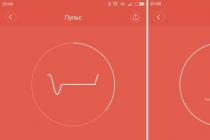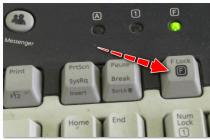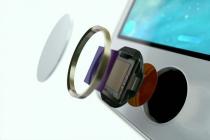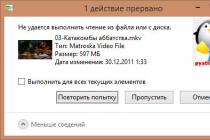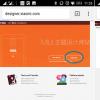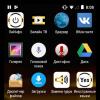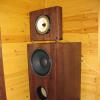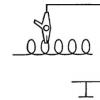Test on the topic: " Information culture and literacy ”.
1. Information culture is -
- stereotypes;
- related;
- behavior;
- aggregate;
- rules;
- with informational;
- norms;
- in society;
- exchange.
2. Match the concept that reveals its essence, definition.
- User information culture;
- Information culture of society.
A. ability ***: to effectively use information resources and means of information communications; and apply advanced advances in the development of informatization and information technologies.
B. ability *** to work purposefully with information and use information computer technologies for its receipt, processing and transmission.
3. Which of the following is not the basis for the formation of information culture?
- Knowledge about the information environment;
- The principle of narrow specialization;
- Knowledge about the laws of the information environment;
- Ability to navigate information flows.
4. Which of the following definitions of information culture, in a broad sense, reveals the essence of the concept?
- it is a set of principles and real mechanisms that ensure the positive interaction of ethnic and national cultures, their combination into the common experience of mankind.
- optimal ways of handling signs, data, information and presenting them to an interested consumer for solving theoretical and practical problems; mechanisms for improving technical environments for production, storage and transmission of information; development of a training system, training a person for the effective use of information media and information.
5. Indicate the required skill set of an Information Society Professional
- Differentiation of information;
- Highlighting relevant information;
- Development of criteria for evaluating information;
- Information production and use;
- The ability to keep confidential data safe.
6. What served as a starting point for the history of information culture:
- The origin of writing;
- Change of a formal attitude to a signal to a meaningful one;
- The emergence of the first school of journalism;
- The emergence of the Internet.
7. What is commonly understood as information literacy according to the work of the International Federation of Library Associations and Institutions?
- Knowledge and skills for effective search information;
- Knowledge and skills to deal with any known information system;
- Ability to independently provide comfortable conditions for processing imformation;
- Knowledge and skills for organizing and reorganizing information.
8. Which of the following concepts are related to information literacy?
- Information ethics;
- Computer literacy;
- Media literacy;
- Information competence
9. Is computer literacy a mandatory part of information literacy?
10. Which of the following activities play a leading role in the development of modern information culture?
- IFLA Annual Convention;
- IFETS Forum;
- Annual exhibition E3;
- ISO public meetings.
11. Which concept is broader?
- Information culture;
- Information literacy.
Test answers:
- 4, 7, 5, 1, 3, 2, 6, 9, 8;
- 1B, 2A;
- 1, 2, 3, 4;
- 1, 4;
- 2, 3, 4;
TOPIC 4 .
Bibliographic description: GOST 7.1-2003
51.
Task number 51
Note, an item of bibliographic description that does NOT apply to a title. By the nature of the information about the document, the following types of headings are distinguished:
face name
name of company
uniform title
document designation
material designation
GOST, which are guided when compiling a bibliographic description of a document:
GOST 7.1-84 0
GOST 7.1-2003
GOST 7.60-2003
GOST 7.11-78
The "description title" element can be:
executive editor
name of the book
first author's name
compiler
not specified, the book is described under the title proper
A punctuation mark that precedes the "statement of responsibility" bibliographic description element:
.- (dot and dash)
, (comma)
; (semicolon) D: (colon)
/(slash)
Note the correct answer
The "output data" area in the bibliographic description includes:
place of publication, name of publisher, date of publication
place of publication
publisher name (publisher)
date of issue
information about the reproduction
Punctuation mark preceding the element of the bibliographic description "place of publication, distribution":
.- (dot and dash)
, (comma)
; (semicolon)
:(colon)
The punctuation mark preceding the "publisher name" bibliographic description element:
.- (dot and dash)
, (comma)
;(semicolon)
:(colon)
/ (slash)
The year in the element of the bibliographic description "date of publication" indicates:
Arabic numerals with the letter g.
Arabic numerals without the letter g.
roman numerals with the letter g.
roman letters without the letter g.
The area of physical characteristics in the bibliographic description includes:
information about illustrations, tables, photographs
volume of the document, information on illustrations
circulation
A bibliographic description element without a punctuation mark: (colon)
edition information
publisher name
title information
information about illustrations, diagrams, tables
Element of bibliographic description without punctuation mark. - (full stop and dash):
edition information
statement of responsibility
place of publication
physical characteristic
series
Analytical bibliographic description, used when describing:
collection
magazine
articles from the magazine, collection
books titled
Punctuation marks, which are placed when describing the data of the journal in the analytical description (// Pedagogy 2008 No. 2 P.15-20):
, (comma)
:(colon)
; (semicolon)
/ / (two forward slashes)
.- (dot and dash)
The object of the analytical bibliographic description of the document is the description:
books of this author
books by two authors
collection
articles from the collection
Module 2.Information search
THEME 6 - 8.Electronic information resources.
Finding information in separate bases data of NB SibSTU.
Electronic catalog: local and network versions.
66.
Task number 66
Issues of works of SibSTU employees can be found using the catalog:
systematic
alphabetical
subject
electronic
topographic
You can search for books by topic using the catalog:
alphabetical
topographic
electronic
systematic
Databases that are absent in the search interface of the IRBIS system:
MARS Corporation articles
Russian Book Chamber
Russian forestry experience
catalog of works of SibSTU researchers
electronic catalog of NB
Elements indicating the availability of the full text in the electronic catalog:
additional restrictions
query terms
link at the end of the full bibliographic description
full text document button
link in short description
Search type for finding CDs, DVDs in the electronic catalog:
physical storage medium
title
type / type of document
publishing organization
thematic rubricator
Search by topic in the electronic catalog is carried out by:
auto RU
keywords
nature of the document
title
To refine the search results by the year of publication of the document, you must use:
logical operators
additional restrictions
truncation
related documents
Full description
You can expand a query in the electronic catalog using:
logical OR operator
logical operator NO
truncations
query expansion is not provided
logical AND operator
You can clarify a request for an electronic catalog using:
logical AND operator
logical OR operator
logical operator NO
Clarified Query menu
clarification of the request is not provided
The type of search in the electronic catalog used in the selection of books by publisher:
nature of the document
title
publishing organization
thematic rubricator
the year of publishing
The type of search in the electronic catalog used in the selection of literature on the organization. For example: SibGGU:
subject headings
UDC, BBK indices
geographical headings
personality
personalia (team)
The type of search in the electronic catalog used in the selection of literature about Napoleon Bonaparte:
subject headings
personalia "team name"
UDC, BBK indices
geographical headings
personality
Check two options.
Types of search in the electronic catalog used in the selection of books on the topic "Higher education in France":
keywords
publishing organization
geographical headings
country of publication
Check two options.
Types of search used in the selection of books by the author Marinina A. B. from the series "Detective through the eyes of a woman":
title
author
nature of the document
series title
keywords
Check two options.
Types of search used in the thematic selection of books in a foreign language:
keywords
geographical headings
publishing organization
subject headings
Search type used in the selection of textbooks:
publishing organization
type / type of document
nature of the document
keywords
title
Chirkunov, O. A. The crisis of the consumption model / O. A. Chirkunov // Banking. - 2009. - N 1.-С.16-17.
Efanov, M.V. Obtaining nitrogen-containing sorbents based on wood waste / M.V. Efanov, D.V. Dudkin, A.I. Galochkin // Journal of Applied Chemistry. - 2002. - T.75, Issue 10. - S. 1745-1746. - Bibliography. at the end of Art.
Kostenko, A. Once again in ratings / A. Kostenko // Ecology and life. - 2009. - N 1. - S. 26.
Influence of metal formates and oxalates on the rate of decomposition of HMX / RS Stepanov [et al.]; Sib. state technol un-t // Physics of combustion and explosion. - 2004. - T.40, N5. - S. 86-90. See the INTERNET link. The document is available for viewing in local network NB
Choose one option
As the title for the design of the list for term papers or other work, use:
list of main used literature
bibliography
list
list of used literature
bibliographic list
A method of building material that is not used in bibliographic lists:
chronological
systematic
alphabetical
by type of publication
inconsistent
Check one.
The bibliographic list for the abstract is given in:
the beginning of the document
end of document
annex
end of the main part
the beginning of each section
Establish a correspondence between the methods and characteristics of building bibliographic lists:
alphabetical arrangement of bibliographic descriptions in
chronological material is arranged by year of publication, and
systematic bibliographic descriptions are arranged by
branches of knowledge, topics.
bibliographic descriptions are arranged in the order of the first references in the main text to documents.
87. Task number 87
Set the order of the sequential description of sources in the bibliographic list:
legislative documents
regulations
Main literature
publications in foreign languages
View document content
"Tests" Information culture of personality "grade 5-6"
Personal information culture
Currently, testing of students is widely used to determine the quality of the knowledge gained in various subjects. Tests are an effective form of control. This material can be used to diagnose the level of knowledge of students in grades 5-6 in the field of information culture.
Test number 1
Choose the correct definition for the word "library":
a) a collection of printed and handwritten materials;
b) the institution in which the public use of printed and handwritten materials is carried out.
c) book storage.
Why the name of the profession "librarian" is pronounced and spelled in masculine form:
a) since ancient times, the profession was considered male;
b) in the feminine gender sounds ugly;
c) you can pronounce and write as you want.
The first attempt of an ancient man to create a book:
a) nodular letter;
b) clay tablets;
c) stone books.
4 .B ancient times in Egypt used for writing:
a) birch bark;
b) papyrus;
5.The library of King Ashurbanipal in Assyria consisted of:
a) papyrus scrolls;
b) parchment books;
c) clay tablets,
6. The most famous library of antiquity was located:
a) Alexandria, Egypt;
b) Pergamum, Asia Minor;
c) the city of Nineveh, Assyria.
7. The best-preserved version of the book since ancient times:
a) nodular letter;
b) clay tablets;
c) papyrus scrolls.
8.In which of the varieties of books were used multi-colored cords, flaps and knots:
a) stone books,
b) nodular letter,
c) clay tablets
9.Parchment writing material was made from:
b) river reed:
10. What books of antiquity were considered the most expensive, valuable and chained to the shelves:
a) papyrus;
b) parchment
c) clay
11.In Ancient Rus forletters were used:
b ) birch bark:
c) paper
The key to the test
TEST NO. 2 on the topic: "THE HISTORY OF THE ORIGIN OF INFORMATION RESOURCES OF THE SOCIETY"
A printing method in which the image is obtained from a flat surface of a wooden board:
a) xerography;
b) cartography;
c) woodcut.
2 In which country were the first printed books published:
a) Holland; b) Germany;
in Russia.
3. The merit of Johann Gutenberg is that he invented
a) casting molds;
b) a new method of metal processing;
c) typography.
4. Name of the letter molds: I
a) letter;
b) matrix;
5 . Howcalled a set of lettersand metal signs:
6. What is the name of the placewhereprint books and newspapers:
a) factory;
b) typography;
c) workshop.
The key to the test
THE RUSSIAN FEDERATION
KHANTY-MANSI AUTONOMOUS DISTRICT
MUNICIPAL EDUCATIONAL INSTITUTION
IGRIMSKAYA SECONDARY SCHOOL №2
Tests
Compiled by L.A. Volkova
Tests "My Information Culture"
Test 1. Add phrases
A society, the level of which is decisively determined by the quantity and quality of accumulated and used information, its freedom and availability, is ______________________________________
A sharp increase in the amount of information that a person must perceive, store and use in the course of his work is __________________________________________________________
The most important type of resources of modern society (along with material and energy), representing documents and arrays of documents in information systems, libraries, archives, funds, data banks, etc., is _____________________________________________________________
An organized socio-economic, scientific and technical process of creating optimal conditions for meeting the information needs of citizens on the basis of new information technologies is __________________________________________________________
The totality of the information worldview and the system of knowledge and skills that provide purposeful independent activity to optimally satisfy individual information needs using both traditional and new information technologies is _____________________________________________________________
Information about objects and phenomena of the environment, reducing the degree of uncertainty and incompleteness of knowledge about them, is __________________________________________________________
A document communicating information that is a statement (description) of the results of research, research, development, etc., is __________________________________________________________
A document brought to the attention of the public by print or other media is __________________________________________________________
A document that has not undergone editorial processing and exists in a limited number of copies is __________________________________________________________
A document that is the result of analytical and synthetic processing of one or more primary documents is __________________________________________________________
Test 2. Circle the number of the correct answer
11. The leading (head) institution in the field of production and distribution of pedagogical information is:
01 NIO "Informkultura",
02 The National Library of Russia,
03 Russian State Library,
04 Russian Book Chamber,
05 State Scientific Pedagogical Library named after K. D. Ushinsky.
Test 3. Complete phrases
12. Publications on the problems of valeology, published over the past 3-4 years, can be identified using the following sources: _____________________________________________________
13. Identify teaching aids for primary school on English language published in the last 3-4 years, you can use the following sources: _____________________________________________________
14. Information about books, articles, methodological developments according to the profile of your activity for the last year, five years, etc. can be obtained using the following editions: ________________________________________________________
Test 4. Circle the number of the correct answer
01 Systematic catalog,
02 Card index of titles of works of fiction,
03 Index?
16. You need to establish the availability of the School Technologies magazine in the library. What can you use in this case:
01 Alphabetical catalog,
02 Systematic catalog,
03 Bibliographic index,
04 Card index of periodicals?
17. What source can be used to establish the title of a book devoted to the development of a child's communicative abilities, if it is known that its authors are N.Ye. Boguslavskaya and N.A. Kupina:
01 Alphabetical catalog,
02 Booklists,
03 Systematic catalog,
04 Systematic index of articles?
18. It is necessary to clarify the periodical in which the article of a particular author was published. What can be used in this case:
02 Annals of journal articles,
03 Chronicle of newspaper articles,
04 Bibliography?
19. It is necessary to establish which editions of M.A. Bulgakov's "The Master and Margarita" is in the library. What can be used in this case:
01. Alphabetical catalog,
02 Booklists,
03 Systematic catalog
04 A card file of titles of works of fiction?
20. What source can you use to check the dates of life and activities of the organizer of vocational education in Russia I.A. Vyshnegradskiy:
01 Pedagogical encyclopedia,
02 Systematic catalog,
03 Historical Encyclopedia,
04 Medical Encyclopedia?
21. You need to find literature about the work of E. Zamyatin. With the help of which sources you can do this:
01 Alphabetical catalog,
02 Systematic catalog,
03 Systematic index of articles,
04 Bibliographic indexes,
05 Bibliographic database?
22. You are interested in a specific topic. With the help of which sources you can search for the necessary documents in a specific library:
01 Systematic catalog,
02 Electronic catalog,
03 Alphabetical catalog,
04 Systematic index of articles,
05 Book exhibitions?
23. You need to find literature on the topic. What can be used when searching for literature:
01 Bibliographic indexes,
02 Systematic catalog,
03 Encyclopedias,
04 Alphabetical catalog?
24. What source can be used to clarify the date of the conclusion of the Treaty of Presburg (and where it happened):
01 Systematic index of articles,
02 Historical Encyclopedia,
03 Bibliographic Index?
25. You have been asked the question: "What is" mentality "?" What source can you use to answer this question:
02 Dictionary of synonyms,
03 Dictionary of foreign words,
04 Pedagogical encyclopedia?
26. You need to find out in what meanings the word "culture" is used. With the help of what sources you can answer this question:
01 Historical Encyclopedia,
02 Dictionary of synonyms,
03 Environmental Dictionary,
04 Pedagogical encyclopedia,
05 Large Soviet Encyclopedia?
27. For a report at the conference it is necessary to clarify the meaning of the word "Autecology". With the help of which source it is better to do this:
01 Great Soviet Encyclopedia,
02 Ecological Dictionary,
03 Dictionary of foreign words,
04 Big Collegiate Dictionary?
28. You need to establish the availability of a specific book in the library - "Personality and the State in Shakespeare's Historical Dramas" (by V.P. Komarova). What can be used by you:
01 Alphabetical catalog,
02 Systematic catalog,
03 Bibliographic indexes,
04 Lists of literature,
05 Systematic index of articles?
Test 5. Complete phrases
29. The library catalog, in which bibliographic records are arranged according to branches of knowledge in accordance with a certain system of library and bibliographic classification, is ___________________
30. Library catalog, in which bibliographic records are arranged in alphabetical order of names or surnames of authors or titles of publications and other documents,
31. It is most expedient to clarify the historical date by ________________________________________________
32. You can select publications in periodicals and continuing publications on a specific topic by ___________________________________________
Test 6. Establish compliance
33. Content of the request: Execution source:
1. Set availability in A - Alphabetical catalog.
library book of a specific B -Systematic catalog.
artwork. D - Systematic catalog.
3. Select literature on a specific E - Card index of reviews.
topic. F - Encyclopedias.
4. Set the meaning of the word. Z - Dictionaries.
1)_____________; 2)______________; 3)_______________; 4)______________.
Test number 7. Add phrases
34. The main types of analytical and synthetic information processing include _______________________
______________________________________________________________________________________________
35. The process of physical reduction of the volume of the primary document while maintaining its main semantic
36. Transformation of the content of documents for the purpose of their analysis, extraction of the necessary information, as well as their
assessments, comparisons and generalizations are _____________________________________________________________
37. A secondary document (or part of it), in which the (main) content of documents on a topic that have appeared over a certain period is set out in a concise form, or a generalization of their content is made,
there is_______________________________________________________________
38. Secondary document, which is a summary of the content of the primary document or its
parts, including the basic factual information and facts necessary for the initial acquaintance with
document and determining the appropriateness of referring to it, there is ___________________________________________________________
39. Secondary document, which is brief description the primary document, its part or group of documents in terms of purpose, content, form and other features,
there is_______________________________________________________________
40. Secondary document, which is a collection of bibliographic information about the primary document, given in accordance with the established rules and intended for its identification and general characteristics, there is_______________________________________________________________
41. Publication in the form of a selection of extracts from a specific text, selected and grouped so as to give
a certain idea of this text, there is _____________________________________________________________
42. An element of the publication apparatus, in a concise form setting out the essence of the work or conclusions from it (often in a foreign language), is _______________________________________________________________
43. The publication containing systematized information of a scientific or applied nature, set out in a form convenient for assimilation and study, and designed for students of different ages and degrees of learning in a particular educational system, is _____________________________________________________________
44. There are the following types of educational publications _______________________________________________________
Test 8. Circle the number of the correct answer
45. Educational and software publications include:
01 Thematic plan,
02 Study guide,
03 Albums,
04 Curriculum,
05 Tutorial.
46. Educational and theoretical publications include:
01 Tutorial,
02 Exercise book,
03 Educational explanatory dictionary,
04 Study guide.
47. Educational and practical publications include:
01 Collection of problems,
02 Collection of foreign texts,
03 Educational Glossary,
04 Workshop,
05 Curriculum.
48. Educational-methodical publications include:
01 Collection test assignments,
03 Lecture notes,
04 Educational and auxiliary bibliographic aids,
05 Course Manuals.
49. Educational reference publications include:
01 Educational and terminological dictionary,
02 Bibliographic reference books,
03 Atlases,
04 Collection of seminar plans,
05 Thematic plan.
50. Educational visual publications include:
01 Educational explanatory dictionary,
02 Exercise book,
03 Albums,
04 Atlases,
05 Curriculum
Test 9. Establish compliance
51. Types of educational publications: Examples of publications:
A - Workshop.
1. Educational and software. B - Study guide.
2. Educational and theoretical. B - Tutorial.
3. Educational and practical. D - Thematic plan.
4. Educational and methodical. D - Curriculum.
5. Educational reference. E - Educational
6. Educational and visual. terminological dictionary.
F - Albums.
Z - Atlases.
And - Exercise book.
K - Collection of descriptions
laboratory work.
L - Educational reference book.
M - Methodical
course.
1)___________; 2)____________; 3)_______________; 4)_______________;
5)___________; 6)____________.
Test 10. Complete phrases
52. There are the following types of scientific documents ________________________________________________________
53. A scientific publication in the form of a book or brochure containing a complete and comprehensive study of one problem or topic and belonging to one or several authors is ___________________________________________________
54. A scientific document containing the main provisions of a report or message, prepared for a scientific conference, symposium, seminar, is ____________________________________________________________
55. The scientific work submitted for protection for the competition of a scientist is __________________________________________
56. A verbatim excerpt from the text of any work, there is ___________________________________________________________
Test 11. Circle the number of the correct answer
57. The abstracts include the following elements:
01 Title,
02 Illustrations,
03 References,
04 Conclusions,
05 Purpose of work,
06 Explanations, examples, argumentation,
58. The structure of the abstract-extract includes:
02. The text of the abstract,
04 Additional information,
05 Key words.
59. The structure of the annotation includes:
01 Bibliographic description,
02 Annotation text,
03 Classification indices,
04 Additional information,
05 Key words.
60. The main features of the scientific style are:
01 Structuredness,
02 Consistency,
03 Abstraction,
04 Integrity,
05 Redundancy,
06 Accuracy,
07 Emotionlessness,
08 Articulation.
61. The main properties of a scientific text are:
01 Structuredness,
02 Consistency,
03 Generalization,
04 Emotionlessness,
05 Redundancy,
06 Accuracy,
07 Connectivity,
08 Abstraction.
Test 12. Additional phrases
62. Indicate the type of secondary document, which is characterized by the following features: "Briefly sets out the main arguments, basic data and conclusions of the primary document; concentrates the content of the primary document by including factual data" __________________________________________________________________
63. Indicate the type of secondary document, which is characterized by the following features: "In addition to information of a reference nature, it provides an assessment of the primary document and recommendations for its use; quotes, entertaining questions, the reception of an unfinished story, etc. are used to characterize the content."
64. Indicate the type of secondary document, which is characterized by the following features: "Contains information of a reference nature without evaluating the primary document; has a specific way of presentation: rigor, emotionlessness, widespread use of reflexive verbs or similar participles" _____________________________________________________________________________________________
65. Stable verbal phrases, a kind of verbal cliche, stamps that make it possible to distinguish individual aspects of the content in the text, there are __________________________________________________________________________________
66. Characteristic words or phrases that uniquely define one or another aspect of the content,
yes ____________________________________________________________________________________________________
67. A relatively independent part of the text, which has semantic unity,
68. Stable phrases characterizing the sequence of presentation of the content, focusing the reader's attention on individual fragments of the text, are ______________________________________________________
69. Words indicating the connection of the marked sentence with the previous or subsequent,
there is____________________________________________________________________________________________________
70. Extraction, extraction from the primary document of the most semantic fragments of the text,
there is____________________________________________________________________________________________________
71. The main types of formal text signs are: _____________________________________________
72. A secondary document obtained by extracting from the text of the primary document the most semantic sentences with formal text features is ________________________________
73. In the course of editing the abstract, the following operations are used: _______________________________________________________________________________________________
74. A secondary document characterizing the primary document in terms of its purpose, content, type, form and other features without evaluation and recommendations for its use is ____________________________________________________________________________________________________
75. A secondary document, not only characterizing the primary document in terms of its purpose, content, type, form and other features without evaluation and recommendations for its use, is _________________________
76. As additional sources of information when compiling a recommendatory annotation, ____________________________________________________________________________________________
Test 13. Establish compliance
77. Secondary Document Type: Collapsing Objects:
1. Supplemental annotation. A - Scientific publications.
2. Abstract extract. B - Educational publications.
D - Reference publications.
D - Children's publications.
E - Popular science
editions.
F - Literary
artistic
editions.
1)______________; 2)_______________; 3)_________________.
78. Formal kind textual Formal textual
trait: trait:
1. Marker. A - It is known that ...
2. Indicator. B - ... the above ...
3. Connector B - Of great importance
acquire questions ...
D - It is important to note that ...
D - MSU developed ...
E - Let's turn to ...
F - ... can find
application for ...
Z - ... this ...
question about…
K - ... the following ...
1)_________________; 2)_________________; 3)___________________.
Test 14. Complete phrases
79. There are the following types of educational texts _______________________
80. Educational and software publication, a normative document defining the content, volume, procedure for studying and teaching any academic discipline (its part, section) is ___________________________________
81. As elements curriculum act _________________
Test 15. Circle the answer number that characterizes your computer skills
82. I know how to use test processors(including to carry out input, editing, design, copying, saving text information, print the document):
01 Perfectly,
02 Partially,
03 I can't.
83. I am able to use graphic processors (including construction and correction of graphic images, compilation of computer animation, design work):
01 Perfectly,
02 Partially,
03 I can't.
84. I am able to use tabular processors (including the input, editing and formatting of tabular data, calculations in tables, printing tables):
01 Perfectly,
02 Partially,
03 I can't.
85. I am able to search for documents in a database (including selecting the required database, presenting the content of a request in a formalized form, using various logical functions, using the menu, the "Help" option):
01 Perfectly,
02 Partially,
03 I can't.
86. I am able to carry out the transmission of documented information at a distance using Email(including preparing, sending and receiving e-mails):
01 Perfectly,
02 Partially,
03 I can't.
87. I am able to receive information from a remote database (including selecting a search server, presenting the content of a request in a formalized form, using specialized search tools):
01 Perfectly,
02 Partially,
03 I can't.
Test 16. Complete phrases
88. nonlinear computer form of information presentation, characterized by connections and links between text fragments, is _______________________________________________________________
89. The global community of diverse computer networks the world is _______________________________________________________________
90. A computer set of texts, graphics, speech, audio, music, animation, etc., is __________________________________________
91. A purposeful process of interaction between a teacher and a student, based on the use of new information technologies and carried out at a distance from the educational institution, is _______________________________________________________________
92. An automated learning tool that implements in an interactive mode the learning algorithm for a particular discipline or one of its sections is ______________________________________________________
93. The type of automated information resources, which is an organized collection of similar records in machine-readable form, is ________________________________________________________
94. Information technology based on the use of personal computers and telecommunications, there is _______________________________________________________________
95. There are the following types of application software products used to create electronic documents ________________________________________________________
96. There are the following types of automated information resources: __________________________________________________________
97. The main Internet services for the exchange of information are: ________________________________________________________
98. Depending on the form of the information provided, the following types of databases exist: _________________________________________
Test 17 - Circle the number of the correct answer
99. K search engines general purpose in the Russian-speaking part of the Internet include:
01 Yandex,
02 Alta Vista,
03 Rambler,
04 Hot Bot /
100. General purpose search engines in the foreign part of the Internet include:
01 Yahoo,
02 Alta Vista,
03 Rambler,
04 Hot Bot,
05 Yandex.
101. Of the following Web site addresses, the following is:
01 http. www. home. com,
02 http: \\ www. home. com,
03 http: // home. gov,
04 http: www / home. ru,
05 http: // gpntb. ru.
102. In the list provided, specify the URL:
01 http: // www. specialist. ru,
02 www. Mikrosoft. com.
03 [email protected] ru,
04 ftp: // ftp. cdrom. com,
05 http.
103. To send email the addressee needs to know:
01 his home address,
02 him phone number,
03 his email address,
04 IP - address of the addressee's computer,
05 destination server password.
104. WWW - short for:
01 Word wrap work bench,
02 Word by word web,
03 World wide web,
04 Windows win world,
05 World windows wire.
105. Of the given E - mail addresses, the correct one is:
03 gleb @mur,
106. To receive a file from an FTP server, you need to know:
01 name FTP - servers,
02 file size,
03 file path,
04 your E - mail address,
Keys to tests
Test 1
1 - information community.
2 - information explosion.
3 - information resources.
4 - informatization.
5 - information culture.
6 - information.
7 - primary document.
10 - secondary document.
Test 2
11 - (05) State Scientific Pedagogical Library named after Ushinsky.
Test 3
12 - chronicle of magazine articles, chronicle of newspaper articles, book chronicle, electronic catalog, systematic catalog.
13 - book chronicle.
14 - book chronicle, chronicle of magazine articles, chronicle of newspaper articles.
Test 4
15 - (02) card index of titles of works of fiction.
16 - (04) periodicals card index.
17 - (01) alphabetical catalog.
18 - (02) chronicle of journal articles.
19 - (01) alphabetical catalog.
20 - (01) Pedagogical Encyclopedia.
21 - (01) alphabetical catalog.
(03) systematic index of articles.
22 - (01) systematic catalog.
(02) electronic catalog.
(04) systematic index of articles.
23 - (01) Bibliographic Index
(02) systematic catalog.
24 - (02) History encyclopedia
25 - (03) Dictionary of Foreign Words
26 - (02) Dictionary of synonyms
(05) Great Soviet Encyclopedia.
27 - (02) Environmental Dictionary
28 - (01) alphabetical catalog.
Test 5
29 is a systematic catalog.
30 - alphabetical catalog.
31 - historical encyclopedia
32 - chronicle of journal articles.
Test 6
33 – 1 ) A. 2 ) G. 3 ) B, C, D. 4 ) Ж, З.
Test 7
34 - bibliographic description, indexing (highlighting keywords), annotation, abstracting, reviewing.
35 - information folding.
36 - analytical and synthetic processing of documents.
37 - overview.
38 - abstract.
39 - annotation.
40 - bibliographic description.
41 - digest.
42 - summary.
43 - educational edition.
44 - educational and software,
Academic and theoretical,
Educational and practical,
Educational-methodical,
Educational reference,
Educational and visual.
Test 8
45 - (01) thematic plan,
(04) curriculum.
46 - (01) textbook,
(05) tutorial.
47 - (01) collection of problems,
(02) a collection of foreign texts,
(04) workshop.
49 - (01) educational terminological dictionary.
50 - (03) albums,
(04) atlases.
Test 9
51 – 1 ) G, D. 2 ) B, C. 3 ) A, I, K. 4 ) M. 5 ) L, E. 6 ) Ж, З.
Test 10
52 - monograph, dissertation, scientific article, report, abstracts.
53 - monograph.
54 - abstracts.
55 - dissertation.
56 - quote.
Test 11
57 - (01) title,
(04) conclusions
(05) the purpose of the work.
58 - (01) bibliographic description,
(02) text of the abstract,
(04) more information.
59 - (01) bibliographic description,
(02) annotation text.
60 - (02) consistency,
(03) abstraction,
(06) accuracy,
(07) emotionlessness.
61 - (01) structuredness,
(05) redundancy,
(07) connectivity.
Test 12
62 - abstract.
64 is a reference annotation.
65 - formal text signs.
66 - markers.
67 - aspects of content.
68 - indicators.
69 - convectors.
70 - extraction.
71 - markers, indicators, connectors.
72 - abstract extract.
73 - substitution, omission, combination.
74 is a reference annotation.
76 - reviews, critical articles, critical biographical, historical and historical and cultural works, reference publications.
Test 13
77 – 1 ) A, B, G. 2 ) V. 3 ) D, E, J.
78 – 1 ) A, B, D, F . 2 ) I, G, E. 3 ) B, Z, K.
Test 14
79 - theoretical and cognitive, instrumental - practical, basic, additional.
80 - curriculum.
81 - cover, title page, back title page, content, introduction, thematic plan, course content, list of references, list of keywords.
Test 15
82-87 is one of three suggested answers.
Test 16
87 - hypertext.
88 – Internet
89 - multimedia.
90 - distance learning.
91 - tutorial.
92 - database
93 - new information technologies.
95 – word processors, table processors, GPUs, universal integrated software systems.
96 - databases, knowledge bases, electronic editions, hypertext, multimedia
97 - Email, teleconferencing, file transfer, mailing lists.
98 - documentary, factual, lexicographic, full-text.
Test 17
99 - (01) Yandex,
(03) Rambler.
100 - (01) Yahoo,
(02) Alta Vista,
(04) Hot Bot.
101 – (05) .
102 – (01) ,
(02) .
103 - (03) his email address.
104 - (03) Word wide web.
105 – (03) .
106 - (01) name FTP servers,
(03) file path,
(05) login and password for connecting to the server.
Information culture of the teacher
Natalia Kochetok
Information culture of the teacherKochetok Natalya Gennadievna, teacher of technology and fine arts, Russia, St. Petersburg, GBOU Secondary School No. 474
Keywords: information culture of a teacher, information society, characteristics of information culture, conditions for the formation of information culture of a teacher.
Keywords: information culture of the teacher, information society, characteristics of information culture, the conditions of formation of information culture of the teacher.
In recent years, considerable attention has been paid to the formation of the information culture of representatives of the pedagogical community: practicing teachers, students of pedagogical universities, etc. This problem is reflected in dissertation research, materials scientific conferences, publications in professional pedagogical periodicals.
V professional activity As a teacher, the ability and desire to find new information, facts, materials, and use them in practice is of great importance. This is especially relevant today, when the time frame for updating information is rapidly decreasing with a simultaneous increase in its volume. Information society requires the formation of a new type of education, in which study becomes an integral attribute of a person's entire life. Today, in order to become (and remain) a specialist, it is necessary to constantly assimilate new knowledge, not being limited to those that were once obtained in an educational institution. The combination of qualities that allow this activity to be carried out effectively indicates a high level of information culture.
The teacher must be able to navigate the ever-growing information flow and instill this skill in his students. And today in the professional pedagogical environment the concepts of "information", "informational", etc. are widely used. in various guises. At the same time, in our opinion, the essence and place of information culture in the activities of teachers and in the system of pedagogical culture are not clearly defined. Information culture today is a necessary component of pedagogical culture. A teacher today must be ready to use new information technologies, be able to fully implement existing information resources, which implies the development of all components of the teacher's information culture. What is information culture? What characteristics does it include, and what are the conditions for its development? This article reveals the main aspects of the formation of a teacher's information culture.
Under information culture means the ability to purposefully work with information (search, selection, creation), use it to receive, process and transfer informatization tools and information technologies. Information culture should be viewed as complex system education reflecting the integration of knowledge about man and the culture of mankind.
The information culture of a teacher includes the following characteristics:
In the intellectual sphere:
- Thinking (the ability to analyze information resources and identify their capabilities in solving problems of pedagogical activity, to show creativity, flexibility, criticality, consistency, mobility and efficiency of thinking in situations of search, transformation and transformation necessary information);
- Knowledge of information technology.
- Motivation for the development of information culture (the desire to master modern information technologies, the desire to study advanced experience in the field of informatization of education, the focus on achieving high level information culture).
- Purposefulness of actions in the information environment (volitional resolution of contradictions, the ability to perform activities at the optimal level of activity, mental stability in relation to difficulties);
- Patience and self-control in situations of information search, its processing for pedagogical purposes;
- Persistence in mastering new information technologies.
- The ability to understand one's own emotional states in situations of information search and processing (to focus on the ways and means of obtaining information);
- Ability to adequately experience the lack of results, technical and other obstacles when working in an information environment;
- The ability to adequately assess their own achievements in the use of information technologies, their level of information culture.
- The ability to reproduce and master new knowledge, types, forms of activity in the information environment;
- Readiness for collective activity using information technologies;
- Operational skills (ability to work with software, make decisions, select necessary information, develop ideas);
- Knowledge of information processing skills;
- Ability to communicate using information tools and technologies;
- Ability to navigate the information environment.
The ability to reflect in the field of information search and transformation, in mastering information technologies and their use;
Ability to correlate their activities, their level of information culture with social and professional experience.
The main conditions for the formation of a teacher's information culture are:
- The inclusion of a teacher in project activities;
- Organization of independent development of various projects by the teacher and their implementation on the basis of information technology;
- Self-diagnosis and self-analysis of achievements in the field of project activities carried out on the basis of information technology;
- Collaboration with colleagues in project activities.
In the context of the informatization of education, the general complex of professionally important qualities necessary for the success of professional activity is complemented by specific qualities that characterize the level of information culture of the teacher... O. N. Mäeots refers to them as follows:
Pursuit:
- interest in modern methods of information exchange and the search for new ways to intensify the educational process on an information basis;
- the need for constant updating of knowledge about the possibilities of using information technologies in the professional and general cultural environment;
- professional mobility and adaptability in the information society.
Personal qualities:
- responsibility when working with technical means, a combination of personal freedom and responsibility for information security society and personality;
- consistency in the formulation and consistent solution of pedagogical problems using information technology tools;
- confidence in the correctness of non-standard decisions.
Position:
- attitude to information, objects and phenomena in a rapidly changing information environment, a critical attitude to information consumption;
- the style of pedagogical communication and interaction with people within the information environment, self-assessment and reflection at the level of information contacts;
- assertion of morality and tolerance in computer communication ”.
The level of formation of information culture teachers can be determined by the following set of criteria indicators:
1) the state of the teacher's informational self-awareness (general cultural and professional erudition; understanding and acceptance of values information activities; reflectivity of the professional position; the use of educational information resources for self-education purposes; consistency of real activities with values);
2) the development of information technology skills (the use of information technology in solving urgent pedagogical problems; the presence of a flexible system of skills; participation in ensuring information interaction in an educational institution);
3) creative activity and independence (participation in project activities, creation of their own information products; the presence of the author's position (methodology); the ability to make a choice and attract the necessary information resources);
4) an emotional attitude to information activities (positive professional self-esteem; interest in information activities; satisfaction with the results of their own information and pedagogical activities);
5) the success and effectiveness of information and pedagogical activities (the presence of achievements in the field of information and pedagogical activities; recognition by the professional community; participation in joint projects with other specialists).
Literature:
- Formation of personal information culture: theoretical substantiation and modeling of the content of the academic discipline / N.I. Gendina, N.I. Kolkova, G.A. Starodubova, Yu.V. Ulenko - M .: Interregional Center for Library Cooperation. 2006. - p.10-11
- Zubov, Yu.S. Informatization and information culture / Yu.S. Zubov // Problems of information culture: collection of articles. Articles.- M., 1994.- S. 6-11
Appendix
Questionnaire for determining the information culture of a teacher
| № | Criteria | Meter | Points |
|---|---|---|---|
| 1. | ICT competency level * | Basic | 1 |
| Teacher-consultant | 2 | ||
| Tutor | 3 | ||
| Research Consultant | 4 | ||
| 2. | Professional development in the field of ICT in the current academic year - full-time | Yes | 1 |
| Not | 0 | ||
| 3. | Advanced training in the field of ICT in the current academic year online | Yes | 1 |
| Not | 0 | ||
| 4. | Uses in educational process acquired CRC | Yes | 1 |
| Not | 0 | ||
| 5. | Uses its own educational center in the educational process | Yes | 2 |
| Not | 0 | ||
| 6. | Replenishes the media library of educational institutions with its own central centers | Yes | 1 |
| Not | 0 | ||
| 7. | Uses ICT in additional education and educational work | Yes | 1 |
| Not | 0 | ||
| 8. | Uses ICT in education management (data processing, statistics, keeping an electronic journal, etc.) | Yes | 1 |
| Not | 0 | ||
| 9. | Supervises the research work of students using ICT (availability of projects on the Internet) | Yes | 2 |
| Not | 0 | ||
| 10. | Uses Internet resources in the educational process | Yes | 1 |
| Not | 0 | ||
| 11. | Uses ICT in preparing didactic material for students | Yes | 1 |
| Not | 0 | ||
| 12. | The number of lessons on which the possibilities of using Internet resources are realized On-Line (in real time) (per week) | More than one lesson | 2 |
| One lesson | 1 | ||
| There are no such lessons | 0 | ||
| 13. | Number of lessons taught computer testing(final, intermediate, thematic) (per week) | Three or more lessons | 2 |
| Less than three lessons | 1 | ||
| There are no such lessons | 0 | ||
| 14. | Number of lessons using interactive, multimedia equipment or digital labs (per week) | Five or more lessons | 2 |
| Less than five lessons | 1 | ||
| There are no such lessons | 0 | ||
| 15. | Participation in competitions, festivals on the use of ICT | Winner or Laureate | 3 |
| Yes | 2 | ||
| Not | 0 | ||
| 16. | Speech at the Moscow Region, teachers' councils, conferences to exchange experience in the use of ICT in the educational process | At the federal level | 4 |
| At the regional level | 3 | ||
| At the city level | 2 | ||
| At the school level | 1 | ||
| Not | 0 | ||
| 17. | Availability printed works in ICT |
Yes | 2 |
| Not | 0 | ||
| 18. | Posting materials in online communities | Yes | 2 |
| Not | 0 | ||
| 19. | Having your own web page (provide url) |
3 | |
| 2 | |||
| Yes, but the material is not updated |
1 | ||
| Not | 0 | ||
| 20 | Own website (specify URL) | Yes, the material is updated at least once every two months | 3 |
| Yes, but the material is updated less than once every two months | 2 | ||
| Yes, but the material is not updated |
1 | ||
| Not | 0 | ||
| 21. | Application of elements of distance learning for students (educational interaction by e-mail with students who are at home, posting trial versions of independent or test works, lectures or additional materials on their own Web pages, etc.) | Distance learning | 4 |
| Own web pages | 3 | ||
| Online Dnevnik.ru | 2 | ||
| Via e-mail | 1 | ||
| Not | 0 |
* Determined using " The essential characteristics of the development levels of ICT literacy of teachers "
** Determined by the presence of the teacher's developments in the media library
The maximum number of points is 43
- Less than 14 - a weak level of development of information culture;
- 15 - 24 - permissible level of development of information culture;
- 25 - 34 - a sufficient level of development of information culture;
- 35 - 43 - the optimal level of development of information culture.



